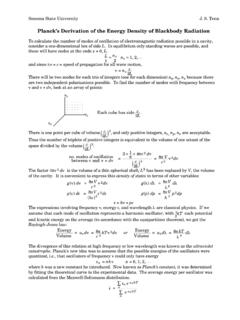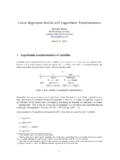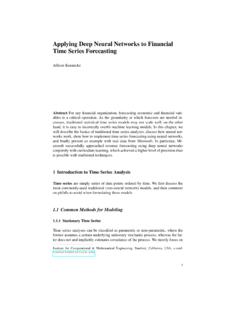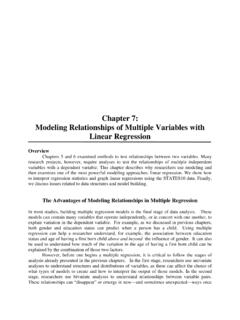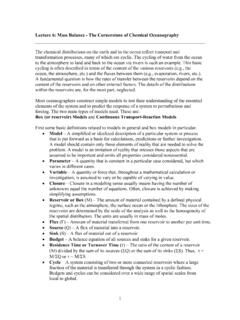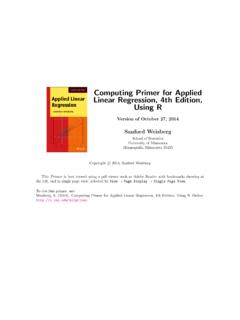Transcription of A Concise Introduction to Astrophysics
1 A Concise Introduction to Astrophysics Lecture Notes for FY2450 M. Kachelrie M. Kachelrie Institutt for fysikkNTNU, TrondheimNorwayemail: M. Kachelrie 2008, minor corrections Stellar astrophysics101 Continuous radiation from Brightness of stars .. Color of stars .. Black-body radiation .. Kirchhoff-Planck distribution .. Wien s displacement law .. Stefan-Boltzmann law .. Spectral energy density of a photon gas .. Stellar distances .. Stellar luminosity and absolute magnitude scale .. 182 Spectral lines and their Bohr-Sommerfeld model for hydrogen-like atoms .. Formation of spectral lines .. Hertzsprung-Russel diagram .. 233 Telescopes and other Optical telescopes .. Characteristics of telescopes .. Problems and limitations .. Other wave-length ranges .. Going beyond electromagnetic radiation.
2 Neutrinos .. Gravitational waves ..314 Basic ideas of special Time dilation a Gedankenexperiment .. Lorentz transformations and four-vectors .. Galilean transformations .. Lorentz transformations .. Energy and momentum .. Doppler effect .. 345 Binary stars and stellar Kepler s laws .. Kepler s second law: The area law .. Kepler s first law .. Kepler s third law .. Determining stellar masses .. Mass-luminosity relation .. Stellar radii .. 426 Stellar atmospheres and radiation The Sun as typical star .. Radiation transport .. Diffusion and random walks .. Photo-, chromosphere and corona .. 467 Main sequence stars and their Equations of stellar structure .. Mass continuity and hydrostatic equilibrium .. Gas and radiation pressure .. Virial theorem.
3 Stability of stars .. Energy transport .. Thermal equilibrium and energy conservation .. Eddington luminosity and convective instability .. Eddington or standard model .. Heuristic derivation ofL M3.. Analytical derivation ofL M3 .. Lifetime on the Main-Sequence .. Stability of stars .. Variable stars period-luminosity relation of Cepheids.. Exercises .. 588 Nuclear processes in Possible energy sources of stars .. Gravitational energy .. Chemical reactions .. Nuclear fusion .. Excursion: Fundamental interactions .. Thermonuclear reactions and the Gamov peak .. Main nuclear burning reactions .. Hydrogen burning: pp-chains and CNO-cycle .. Later phases .. Standard solar model and helioseismology .. Solar neutrinos .. Solar neutrino problem and neutrino oscillations.
4 689 End points of stellar Observations of Sirius B .. Pressure of a degenerate fermion gas .. White dwarfs and Chandrasekhar limit .. Supernovae .. Pulsars .. 7510 Black Basic properties of gravitation .. Schwarzschild metric .. Heuristic derivation .. Interpretation and consequences .. Gravitational radiation from pulsars .. Thermodynamics and evaporation of black holes .. 83II Galaxies8611 Interstellar medium and star Interstellar dust .. Interstellar gas .. Star formation .. Jeans length and mass .. Protostars .. 9112 Cluster of Overview .. Evolution of a globular cluster .. Virial mass .. Hertzsprung-Russell diagrams for clusters .. 9813 Milky Way .. Rotation curve of the Milkyway .. Black hole at the Galactic center .. Normal and active galaxies .. Normal Galaxies.
5 Hubble sequence .. Dark matter in galaxies .. Galactic evolution .. Active Galaxies and non-thermal radiation .. Non-thermal radiation .. Radio galaxies .. Other AGN types and unified picture .. 110 III Cosmology11314 Overview: Universe on large Problems of a static, Newtonian Universe .. Einstein s cosmological principle .. Expansion of the Universe: Hubble s law .. Cosmic distance ladder .. 1166 Contents15 Cosmological models for an homogeneous, isotropic Friedmann-Robertson-Walker metric for an homogeneous,isotropic universe . Friedmann equation from Newton s and Hubble s laws .. Friedmann equation .. Local energy conservation and acceleration equation .. Scale-dependence of different energy forms .. Cosmological models with one energy component .. Determining and the curvatureR0from m,0,H0, q0.. The CDM model.
6 12816 Early Thermal history of the Universe - Time-line of importantdates .. Big Bang Nucleosynthesis .. Structure formation .. Cosmic microwave background .. Inflation ..137A Some Mathematical formulae .. Some formulae from cosmology .. 139B Units and useful SI versus cgs units .. Natural units .. Physical constants and measurements .. Astronomical constants and measurements .. Other useful quantities .. Abbreviations: .. Properties of main-sequence stars .. 1427 Astrophysics some introductory remarks Astronomy is with mathematics one of the oldest branches of science. It has served asbasis for calendars, navigation, has been an important input for religions and was for along time intertwined with astrology. Some of the most important steps in modern astronomy were: Galileo performed 1609 the first astronomical studies usinga telescope.
7 He discov-ered among others four Saturn moons and sun spots. Kepler (1571-1630) developed his three laws of planetary motions, based on obser-vations of Tycho Brahe. Newton established 1687 his laws of motion and gravitation. The measurement of the distance to Venus 1761 and 1769 duringits transits ofthe Sun with the help of the first global measurement campaignand to the neareststars 1838 by Bessel using trigonometric parallaxes established the first rungs inthe cosmic distance ladder. Fraunhofer discovered around 570 spectral lines in the solar light in 1814 andcatalogued them. This opened together with the spectral analysis of Kirchhoffand Bunsen (1859) the way to study the physical properties ofstars. Einstein s general theory of relativity (1916) provided the first consistent basis tostudy cosmology. The Great Debate in 1920 was concerned about the question Does the MilkyWay represents the whole Universe or is it just one island among many others?
8 Opik, Shapley and Hubble showed that the latter is true. Hubble discovered 1926 that galaxies are recessing and thattheir velocity is increas-ing with distance: The universe is expanding and, extrapolating this expansionback in time led to the idea of the Big Bang. Nuclear fusion was suggested in 1920 by Eddington as source for stellar energy, themain principles were worked out after the advent of quantum mechanics by Betheand v. Weizs acker in the 1930s. The discovery of the cosmic Kelvin background radiation1964 by Penzias andWilson gave credit to the Big Bang theory. Few other examples for the interconnection of astrophysicsand physics, where astro-nomical observations were an important input for fundamental physics, are: Olaf C. R omer (1644-1710) showed 1676 that the speed of lightis finite by obser-vations of Jupiter moons: Light needs around 20 min to cross the Earth orbit.
9 The 1919 solar eclipse was the first crucial test passed by thetheory of GeneralRelativity of Einstein, while a binary system of two pulsarsdiscovered by Hulseand Taylor in 1974 became the first experimental evidence forthe existence ofgravitational Observation of neutrinos from the Sun and produced by cosmicrays in the Earth satmosphere gave in the 1990 s first firm evidence that neutrinos have non-zeromasses. The need for a new form of dark matter to describe correctlythe formation anddynamics of galaxies requires a yet unknown extension of thecurrent standardmodel of elementary particle physics. The same holds true for a new form of darkenergy required for the explanation of the accelerated expansion of the universe. Astronomy as a purely observational science is unique amongnatural sciences; all othersare based on experiments. Since the observation time is muchsmaller than the typicaltime scale for the evolution of astronomical objects, we seejust a snapshot of the uni-verse.
10 Nevertheless it is possible to reconstruct, , the evolution of stars by studyinglarge samples. On the extragalactic scales, we can use that looking far away meanslooking into the past because of the finite speed of light, while on the cosmological scalewe can use relics formed soon after the Big Bang as testimonies for the state of the earlyuniverse. The cosmological principle is based on the belief that themankind and the Earthhave no special role. Thus physical laws derived on Earth arevalid everywhere and atall times. Astronomers and especially cosmologists are said to live these days in a golden age :There has been a tremendous increase of knowledge in the last15 years: Telescopes anddetectors on satellites explore new wavelength ranges, while new automatized ways toanalyse data allow astronomers the comparative study of millions of needs input of practically all sub-disciplines of physics and thus a course onastrophysics cannot be self-contained.
